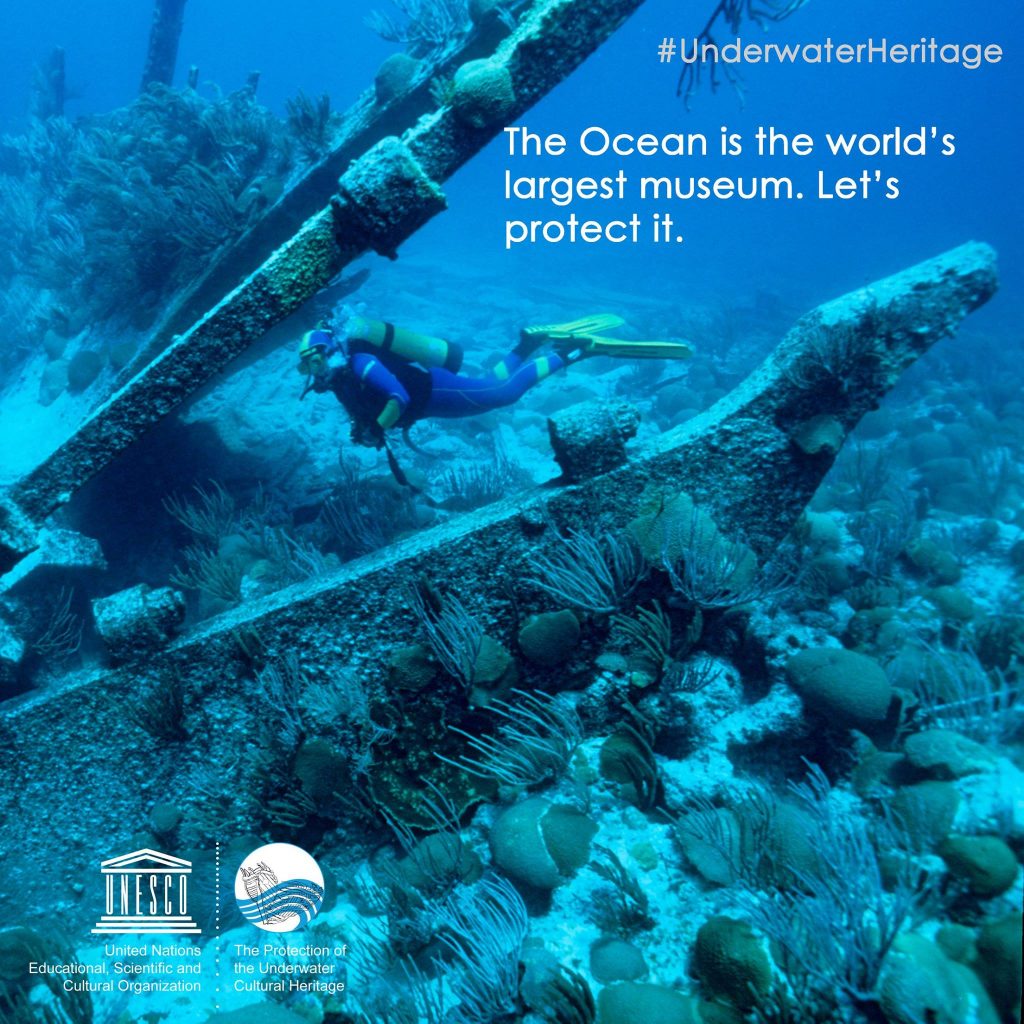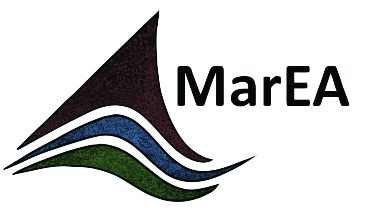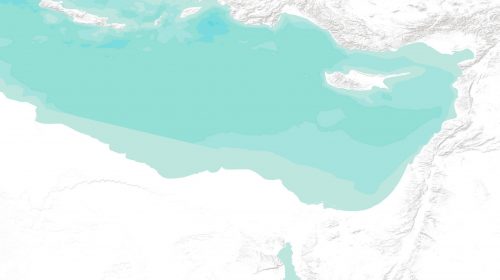by Georgia Andreou
The ethics of maritime archaeology is an extensively debated topic with notable emphasis on distinguishing archaeological practice from treasure-hunting and highlighting whether certain approaches, methodologies, overall aims and motivations are acceptable scientific research (Flatman 2007; Gately and Benjamin 2018). Considering the relationship between maritime archaeological practice, its media representation and public perceptions, it has long been argued in the context of public archaeology, that practitioners need to develop increasingly rigorous and reflexive archaeological interpretations (e.g. Scott-Ireton 2014). In addition, despite the longstanding engagement of maritime archaeology within imperial frameworks of economy and politics (e.g. Strootman et al. 2019), the imperial and colonial underpinnings of archaeology and their impact on knowledge production in the discipline, has been explored to a lesser but consistently increasing extent (e.g. Lydon and Rizvi 2010).
This blog post considers these issues in reference to the recent media coverage of the discovery of a number of shipwrecks between Cyprus and Lebanon in the eastern Mediterranean, including a uniquely large Ottoman ship containing international trade goods. Reviewing information provided to the wider public by outlets with significant outreach (the Guardian, Daily Mail, Express, the National and Middle East Monitor), I first provide a summary of how this discovery was publicised and subsequently discuss the controversy covered by the Cyprus Mail. My emphasis is on contextualising the problematic, in my view, language used by the media and its ramifications on public perceptions of archaeology and cultural heritage.

Outline
On the 18th of April 2020 the Guardian published an article with the catchy title: Mediterranean shipwrecks reveal ‘birth of globalisation’ in trade. The article reported the discovery of 12 shipwrecks in 2015 between Cyprus and Lebanon with more details on a distinctly large Ottoman ship. The Guardian relied on information provided by the archaeologist of this expedition, Dr Sean Kingsley, often citing directly his description of the finds and their broader importance. The cutting edge technology employed by the company conducting this expedition (Enigma Shipwreck’s Project) were also mentioned. Two things that stand out in this publication are (1) the international content of the shipwreck and its significance in global history (using words such as “globalization”, “cultures and civilizations”, “cosmopolitan”) and (2) the location of the wrecks “beyond any country’s territory”, in Lebanon’s Exclusive Economic Zone (EEZ).
On the 21st of April 2020, this information was reproduced by the Express, using an even more captivating title: British team finds 12 shipwrecks changing entire idea of civilization. As early as the first sentence, the Express attempts to answer the inevitable question of why these shipwrecks were reported in 2020 instead of 2015, by mentioning that the unprecedented discovery was “kept SECRET for five years”.
A few hours later, the Daily Mail reproduced this information, appearing to quote in the title Kingsley’s description of the discovery as ‘Like finding a new planet’. Citing Kingsley through an interview he gave to BBC Radio 4, the Daily Mail focused on the moment of discovery using quotes such as: “It doesn’t get better than this” and “for an archaeologist it’s the equivalent of finding a new planet”. The recording technologies employed were also praised; Tim McKechnie, the co-director of Enigma Recoveries, was quoted as saying, “The 3D photogrammetry mapping of the Ottoman colossus was a first for this technology in the East Mediterranean”. The article concludes with a quote by Kingsley saying that “We want to make sure this gift to humanity ends up in a public museum so everyone can enjoy it”.
Although I acknowledge the ways in which meaning can be distorted when sentences are taken out of context, it’s important to highlight that agency is involved in the process of choosing specific, emphatic, if not sensationalist vocabulary, instead of employing more nuanced language that addresses the complexities of archaeological interpretation. Regardless of that, the vocabulary used by both Kingsley and the media evokes excitement to readers, particularly those that do not have regular engagement with updated historical, archaeological and political-science scholarship. This is further highlighted by the lack of references to existing research on 3D recording of underwater cultural heritage (UCH), longstanding research on the history of globalisation, and interdisciplinary discourse on controversies surrounding the “museum” as an institution. One can argue that such content would be too technical for the wide and diverse readership of those media outlets, although on multiple occasions the Guardian, who first reported on the shipwrecks, has touched on equally complex issues from the social and political sphere.
For archaeologists, particularly those working in the region, a number of questions arise from the publication of such emphatic statements. But before getting to the specifics of these questions, it’s important to mention also how this information was reproduced in English speaking outlets in the Middle East.
On the 22nd of April 2020 the National (self-described as Middle East’s leading English-language news) reproduced the Guardian’s core information, including a shocking allegation that “The 588 items recovered from the wreck in 2015 have been impounded following a dispute over documentation by Cyprus (whose port was used as the base of the expedition) which is seeking to sell them at auction.” This information was also reproduced by the Middle East Monitor on the 23rd of April 2020.
It is reasonable to assume that a reader without background knowledge would accept the information outlined above as truthful. As such, a reader learns that a unique shipwreck was excavated by a British-led team with the use of ground-breaking technologies in 2015. The content of this shipwreck, which would eventually be placed in a museum for people to enjoy, has the ability to change the way in which we view global economic history. However, this is prevented by a local authority (the Department of Antiquities of Cyprus) that claims ownership and allegedly aims to sell those finds, although they were recovered beyond “any country’s territorial waters”. It is also reasonable to assume that some of these readers contributed to the proliferation of this news by sharing them on social media.
On the 24th of April 2020, a different version of this information was published by the Cyprus Mail, an outlet with lower outreach. According to the Cyprus Mail, which derives its information from the Department of Antiquities of Cyprus, the excavation of the shipwrecks was not conducted legally nor scientifically, causing damage to the artefacts and their context. Although it is a legal requirement to declare all cargo, the collected artefacts were not included in the manifest at Limassol port in Cyprus, which was used as the base by the expedition boat. This omission led to the confiscation of artefacts by the Cypriot government. Described as an “administrative misunderstanding”, Enigma Recoveries expressed their concern that the artefacts will be damaged “under Cypriot control” – something that seems unlikely given the antiquities’ law in Cyprus (including rigorous UCH legislation), as well as the existence of conservation facilities and expertise on the island. The Cyprus Mail article was shared extensively among archaeologists, including a relevant tweet by the MarEA project that highlighted the importance of adhering to the UNESCO 2001 Convention for the Protection of Underwater Cultural Heritage and the Law of the Sea. Since then, no further information has been published by the Guardian or any of the media outlets discussed above to acknowledge the controversy and potentially amend the information disseminated.
How can media (mis)representation endanger maritime archaeology?
Beyond the potential serious legal ramifications of this story, which would be analysed more accurately by a heritage law specialist, I will focus on aspects that pertain to MarEA’s core aim to document endangered maritime archaeology and identify ways in which it can be protected. One of the key issues identified is the use of problematic vocabulary to describe the shipwrecks and the impact of media outlets to public perceptions of the value of heritage. I argue that this relation can endanger underwater cultural heritage, by distorting its value for scientific research.
To begin with, a problem that arises from the language employed is the association of the size of the Ottoman wreck and its reported value. To an extent, a larger context can be more informative and potentially contain larger samples of materials and artefacts for further research (e.g. wood samples for dating and paleo-environmental studies). What comprises that context is, however, more important in archaeological interpretation. In this case, it is the content and not the size of the Ottoman ship (emphasised by Kingsley and all media outlets) that bears evidence for international maritime exchange networks. In fact, one could make (and many have made) a persuasive argument for the existence of such networks, relying on existing textual documentation from the Ottoman Empire (e.g. Panzac 1992; Barbir and Fleet 2000; Ward and Baram 2006). In this respect, few would argue that this wreck has revolutionised the way we view the Ottoman or contemporary global economy, although it is a source of valuable information that is not included in the archives of the Ottoman Empire (e.g. personal objects of the crew, shipping technology).
Additional value to the findings is added by emphasising the notion of discovery. This is accomplished by sensational descriptions of the recovery of the wrecks as “the equivalent of finding a new planet” and a question seeking an answer “after a 70-year hunt”. In fact, the excitement surrounding this discovery seems to be used to justify the lack of archaeological reporting, which is a standard practice in scientific research and a requirement according to the 2001 UNESCO Convention. Describing the lack of publications as part of a “well-kept secret”, suggests that such practice is standard, when this is hardly the case. Although I was not able to verify whether Enigma produced a report for the UK or Lebanese authorities, undoubtedly this information was released widely to the public five years later.
The legitimisation of the expedition is also attempted by praising the use of “ground-breaking technology”. Developing a thorough research design and adhering to methodologies accepted as part of the archaeological discipline does not legitimise the removal of artefacts, nor the lack of accurate, (peer-) reviewed reporting. Finally, even though the expedition potentially used, for the first time, a specific type of 3D documentation equipment, such methodologies and technologies have been used before 2015 (and are widely available) as suggested by the increasing number of publications on this topic (McCarthy et al. 2019). Therefore, suggesting that “The 3D photogrammetry mapping of the Ottoman colossus was a first for this technology in the East Mediterranean” is inaccurate and misleading, particularly given the existence of a 3D photogrammetric laboratory based in the Cyprus Technology University, with engagement and publications with UCH projects.
In addition, the attempt to legitimise the expedition via the use of ground-breaking, in-situ technologies, significantly diminishes the need to extract the artefacts from the seabed. If the artefacts were documented in sufficient detail as showcased in the various media outlets, why was their expensive and unsustainable extraction necessary? As per the UNESCO Convention 2001 guidelines, 3D documentation technologies have been used by archaeologists to limit the extraction of artefacts from the seabed and mitigate for disturbing submerged contexts. Collecting and displacing cultural resources for no specific reason or research question, affects the perception local communities have on conducting archaeology and its connotations. These communities are often aware of the colonial legacies of early archaeology in the Middle East, including the violent removal and displacement of artefacts and their relocation in western museums (e.g. Azoulay 2019). Maintaining these historical associations prevents archaeologists from developing relations of mutual trust with local communities. In turn this could affect international collaboration projects, closing the door to funding and expertise, as well as preventing collaborative capacity building for protecting UCH.
In the same context, further justification of the expedition was attempted by suggesting that the overall aim was to showcase these finds in a major museum for the public to enjoy. On the one hand, the 3D documentation of artefacts could form part of an online display, which is an accessible and more sustainable solution. On the other hand, the artefacts were extracted from the seabed, inevitably leading to many questions: Where would this collection be housed? In the UK, where Enigma is registered? In Lebanon that controls other resources in its EEZ? Or in the Bahamas, whose flag was on the boat that conducted the excavations? Was preparation for such exhibition made in advance of the extraction of the artefacts?
In the case of the 588 artefacts, Enigma relies on a misconception that uses the institutionalisation of the museum as a means to legitimise the displacement of artefacts from their original context by handling them carefully, preserving, cataloguing and displaying them. As the public’s engagement with archaeology is primarily through museum environments, the dislocation of artefacts from their original contexts has become normalised. In other words, these environments came to replace the original contexts of the artefacts that have been disturbed. Justifying the destruction of archaeological contexts via excavation for the sake of display can endanger and damage archaeological sites by encouraging such disturbances (aka looting) by non-archaeologists. It also encourages the trade of antiquities as “art”, the value of which derives from the artefacts’ suitability as museum display.
The location of the shipwreck in EEZ complicates discussions on national jurisdiction and “ownership”. The legal complexities of cultural heritage in EEZ, however, do not justify a finder’s keeper’s mind-set. In fact, such a mind-set has been criticised extensively in the context of maritime archaeology and has been viewed by many as no different than plundering.
Preventing damaging practices resulting from such misconceptions highlights the need for a closer collaboration between archaeology and media professionals. The last section argues for a shift of focus in media representation by engaging the public also with the theoretical development and ethical dimensions of maritime archaeology.
Conclusion: Archaeology and the Media
Rather than focusing on problems arising from pervasive misconceptions, it is more constructive to consider how archaeologists can counter these misconceptions and engage more directly with the public. These ways are hardly unknown to the archaeological community and include community heritage programmes, ethnographic studies, public lectures, open source publications, but most importantly consistent engagement via media outlets and social media (Kansa et al. 2011; Kansa et al. 2013). Active social media presence can assist in developing heritage literacy and can contribute toward a more critical reception of information.
The need for more accessible language in communicating with a diverse audience is widely accepted and extensively discussed (e.g. Bonacchi 2012; Walker 2014). Given that the misconceptions highlighted in this blog have been perpetuated by respectable news outlets, it seems appropriate to move beyond buzz words and toward developing a more accessible but accurate content. This content could highlight archaeology’s intellectual processes and explore the benefits and limitations of available methods and techniques, which could be just as, if not more, engaging than emphasising size and value. This content is potentially communicated more effectively via short posts. Two or three sentence tweets for example can sufficiently respond to inaccurate reporting of archaeological finds and research. They can deconstruct processes of knowledge production, e.g. by discussing the history of the relationship of archaeology and the media. They can also provide the tools, in the form of links to publications or databases, or tagging specialists, to assess more critically the information distributed by outlets with significant outreach (Daniels 2013).
Social media offer the privilege of directly engaging with the public, disseminating more accurate information in the era of “fake news” and protecting instead of endangering cultural heritage. On the contrary, problematic engagement with media and lack of negotiation between archaeological and media professionals, endangers cultural heritage by proxy. Shifting cultural perceptions of heritage has a longer standing effect on the preservation and protection of UCH, particularly its most vulnerable contexts. Such a shift is also more sustainable and fosters closer collaboration between heritage specialists and local communities.
Citations
Azoulay, A. 2019. Potential History: Unlearning Imperialism. London: Verso Books.
Barbir, K. and K. Fleet 2000. European and Islamic trade in the Early Ottoman state: the merchants of Genoa and Turkey. American Historical Review 105: 10.2307/2652205.
Bonacchi, C. (ed.) 2012. Archaeologists and Digital Communication. Towards strategies of Public Engagement. London: Archetype Publications.
Daniels, J. 2013. From tweet to blog post to peer-reviewed article. How to be a scholar now. LSE impact of social sciences, available at http://blogs.lse.ac.uk/impactofsocialsciences/2013/09/25/how-to-be-a-scholar-daniels
Flatman, J. 2007. The origins and ethics of maritime archaeology—part I. Public Archaeology 6: 77–97.
Gately, I. and J. Benjamin 2018. Archaeology hijacked: addressing the historical misappropriations of maritime and underwater archaeology. Journal of Maritime Archaeology 13: 15–35.
Kansa, E.C., S.W. Kansa and L. Goldstein 2013. On ethics, sustainability, and open access in archaeology, SAA archaeological record 13 (4): 15–22.
Kansa, E.C., S.W. Kansa and E. Watrall (eds) 2011. Archaeology 2.0. New Approaches to Communication and Collaboration, Los Angeles: Cotsen Institute of Archaeology Press.
Lydon, J. and U.Z. Rizvi (eds) 2010. Handbook of Postcolonial Archaeology. Abingdon: Routledge.
McCarthy, J.K., J. Benjamin, T. Winton and W. Duivenvoorde (eds) 2019. 3D Recording and Interpretation for Maritime Archaeology. Cham, Switzerland: Springer. Top of Form
Panzac, D. 1992. International and domestic maritime trade in the Ottoman Empire during the 18th century. International Journal of Middle East Studies 24(2): 189-206.
Scott-Ireton, D.A. (ed.) 2014. Between the Devil and the Deep: Meeting Challenges in the Public Interpretation of Maritime Cultural Heritage. New York: Springer.
Strootman, R., F. Eijnde and R. Wijk (eds) 2019. Empires of the Sea: Maritime Power Networks in World History. Boston: Brill.
Walker, D. 2014. Antisocial media in archaeology? Archaeological Dialogues 21(2): 217-235.
Ward,
C. and U. Baram 2006. Global markets, local practice: Ottoman-period clay Pipes
and smoking paraphernalia from the Red Sea shipwreck at Sadana Island,
Egypt. International Journal of Historical Archaeology 10: 135–158.


